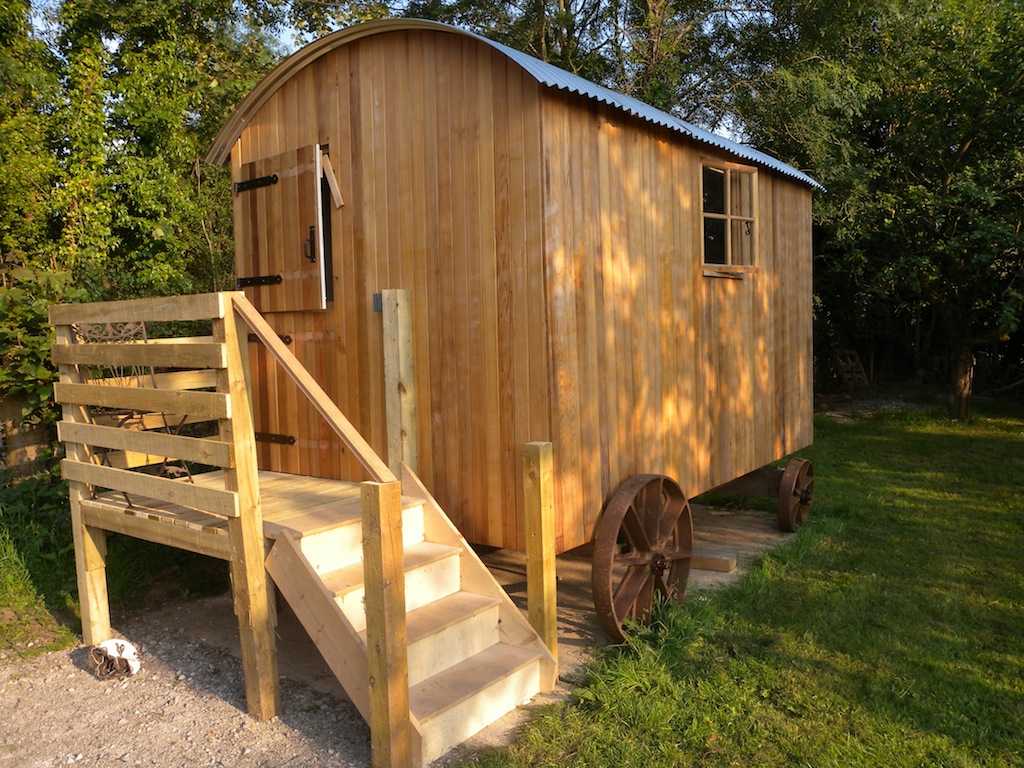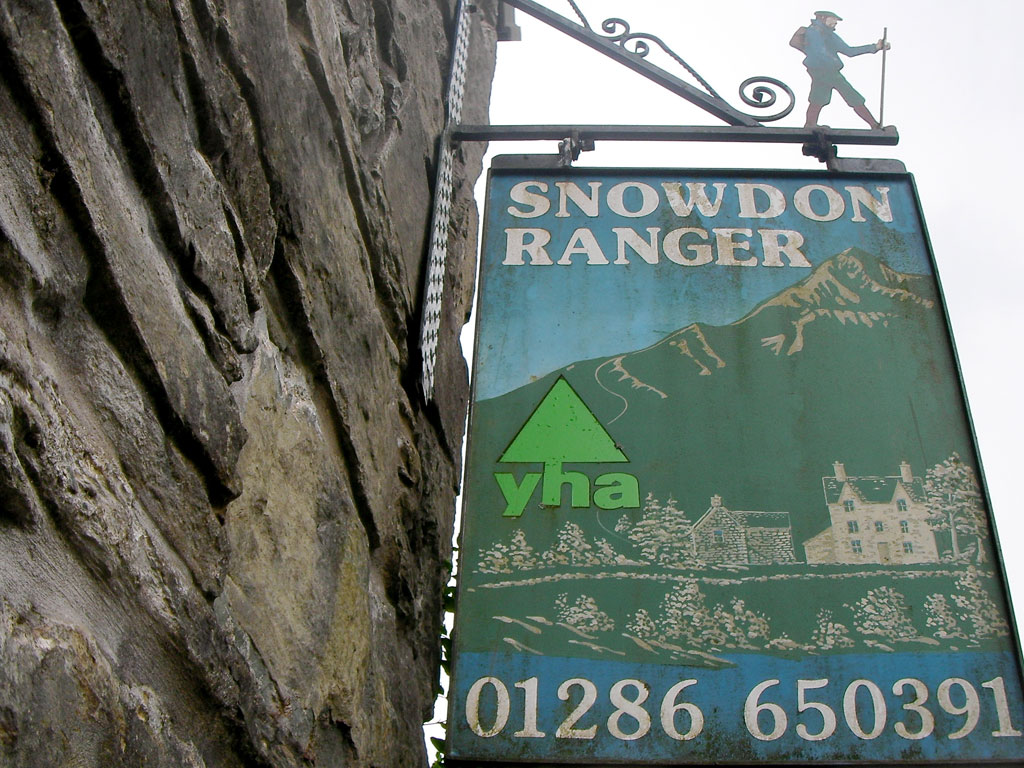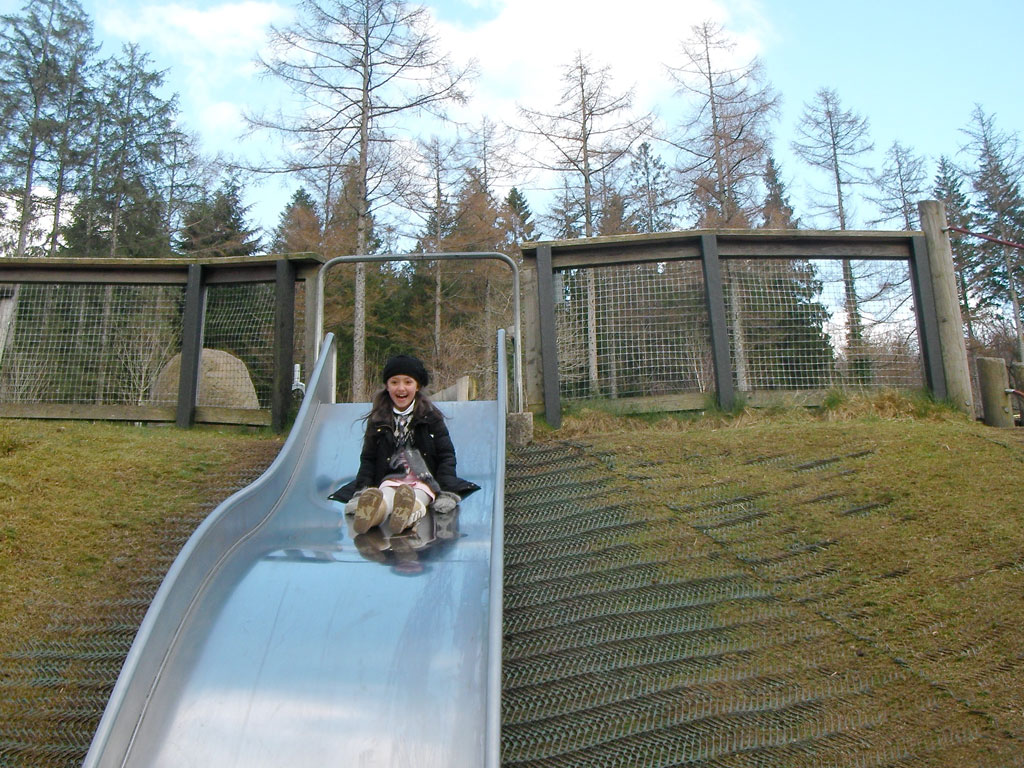* I spent a night this week in a living van [pictured above] and this week I’m taking the girls to a hut on Wales’ Llyn Peninusla. In the spirit of glamping for National Parks Week (July 28 to August 3 this year), here’s another camping story from the archives.
Follow me on Twitter, or subscribe to the RSS, for weekly updates from my travel-writing archive in the months to come.
The North of England has a new secret weapon to beat the downpours for a Great British summer of good-value holidays closer to home: pods.
Barrel-like, timber-built camping pods to be precise. They look like a cross a garden shed or a flat-pack frenzy at an IKEA store.
I’ve come to the Bellingham Camping and Caravanning Club site, 17 miles north of Hexham at the fringe of the rural Northumberland National Park, to test drive a pod for the night.
This is the UK’s second camp site to install the pods with the first group of ten having enjoyed a busy season at the Eskdale club site in Cumbria.
In pod we trust
Bellingham’s four pods are clustered together in a tree-shrouded, gated enclosure close to the camp shop and rather handy for what is known in camping parlance as the facilities block.
Inside, my mini-me chalet is functional and utilitarian.
A wooden-framed structure, insulated with sheep’s wool and tiled with weatherproof slates, they can accommodate two adults comfortably, a family with two small kids at a squeeze.
There’s plenty of headroom and enough space to swing a toddler – just.
The Bellingham pods come with two camp beds, two folding chairs and a folding table. They have French windows onto a decking porch and two small LED lights above the beds.
You need to bring pillows, sleeping bags and towels.
The five-and-a-half-acre site is clean and functional with hot showers, a children’s play area and Wi-Fi internet access. The pods arrived ready erected for the new season and are already proving a hit.
But, if you fancy adding one gazebo-style to the back garden, don’t expect much change from £6,000.
Local fare
That evening, as I sit on my tiny patch of decking, a fine drizzle liberally sprinkling my newspaper, I’m joined by fellow podders for the night.
Jaco and Nicola de Villiers from near Cape Town are on a three-week camping trip around Britain, taking in the Lake District, Scotland and Northumberland.
They joined the Camping and Caravanning Club prior to leaving South Africa for access to discounts and information.
“We like the atmosphere of camping, the closeness to nature, but after three nights under canvas, the pod feels really warm and cosy,” they enthuse.
“It’s a good-value alternative to camping when it rains.”
With the campers firing up Calor Gas stoves around me, my thoughts turn to dinner.
Option one: heating up some baked beans from the camp shop. Option two: a 15-minute stroll down to the village in search of a local hostelry.
A steak and kidney casserole and a pint of Black Sheep bitter at the Riverdale Hall Hotel all too inevitably win out and I wander back with a full stomach as the daylight fades over the farmland of the least populated county in Britain.
A hip flask of Jamieson whisky, a good book and a night in my pod await.
Wild night
Around 2am the true joy of the pod becomes apparent. I awake bleary eyed to find black sheets of rain lashing the camp site, gales blowing throaty gusts across the landscape and the kind of chill only brass monkeys appreciate.
The joy of glamping! I flick the switch on the in-pod radiator, crank the thermostat to nuclear and snuggle back under my sleeping back for some serious slumber.
The next morning heralds a brighter, fresher take on the landscape.
On a longer stay I might indulge in some waking, cycling or fishing by hiking along the Pennine Way footpath, which runs past the front gate. Ot try mountain biking around Kielder Water and Forest Park, the largest man-made lake in Europe some eight miles away, or casting off for salmon into the waters of the North Tyne from nearby Hadrian’s Wall.
Alnwick Castle, the fairytale location for the Harry Potter films, is a 50-minute drive; you can catch a culture-fix performance at The Sage Gateshead within 40 minutes.
But, with a train to catch later that day, I satisfy myself with an early-morning sortie to the village of Bellingham, a workaday farming community of stoic, stone-built cottages, village pubs and a traditional village bakery.
Shards of sunlight mark my half-mile stroll along country roads, skipping over a weather-beaten bridge and passing frolicking lambs en route.
Figures from the Camping & Caravanning Club indicates bookings at campsites are up 27 per cent year on year as people look for cheaper, simpler alternatives to the Eurozone’s currency rip-off and the bunfight at airports during half-term week.
Barry and Carole Howard, who run the Bellingham site as franchisees from the Camping and Caravanning Club, report their occupancy is up nearly 30 per cent.
“We’re finding the pods are bringing in a new generation,” says Barry,
“People are discovering that camping has moved on from its traditional image of a field and a tap.”
I was a cynic, too. But after my night in a pod, I may now even carry on camping.
* This story was first published in the Daily Express in 2009. Liked this? Try Exploring Snowdonia in National Parks Week.
Post your comments below.


